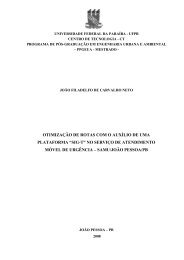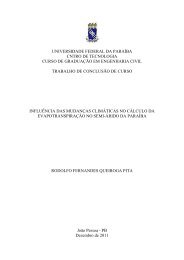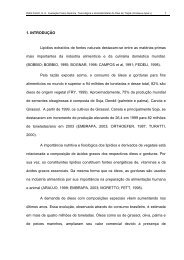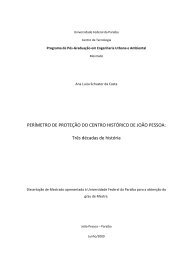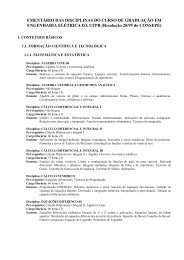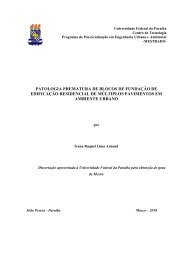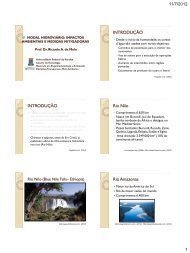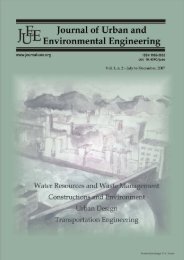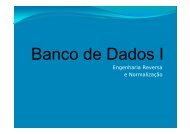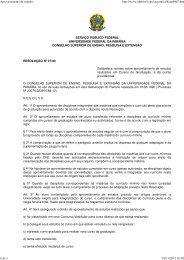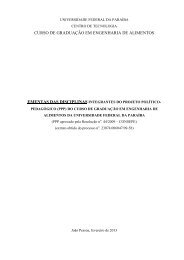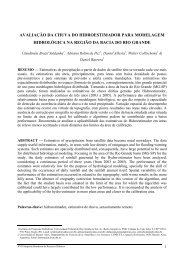editorial team
editorial team
editorial team
You also want an ePaper? Increase the reach of your titles
YUMPU automatically turns print PDFs into web optimized ePapers that Google loves.
Gobinath and Nagendran<br />
environment and society. Economically, P2 and CP can<br />
actually reduce costs and in some cases, generate profit.<br />
Both approaches are practical and feasible, and can<br />
consequently contribute to a sustainable future (Devi,<br />
2005).<br />
Cleaner production, pollution prevention, etc. are all<br />
subsets of the concept of sustainable development,<br />
which states the basic problem that the other concepts<br />
attempt to address: There are limits to what the<br />
environment can tolerate, and society needs to ensure<br />
that development today does not cause environmental<br />
degradation that prevents development tomorrow. There<br />
are many issues here but the role of industry and<br />
industrial pollution is obvious. Industrial systems and<br />
individual companies will need to make changes in<br />
order to prevent future generations from being unable to<br />
meet their own needs. Sustainable development is thus<br />
the long-term goal of individual companies rather than a<br />
business practice.<br />
Eco-campus approaches must be implemented step<br />
by step. First of all, data collection has to be conducted<br />
in order to find out what the status of the campus is.<br />
After collecting all information and data, the next step is<br />
determining of problematic areas and find out what the<br />
reasons are. Finally, proposing the way that can solve<br />
the issues, in order to achieve the sustainable<br />
development. Eco campus is a concept implemented in<br />
many Universities across the globe to make them<br />
sustainable because of their mass consumption of<br />
resources and creation of waste. Waste minimization<br />
plans inside the Universities for solid and wastewater is<br />
now mandatory to maintain the cleanliness inside the<br />
Universities. The number of Universities in the near<br />
future will be doubled and it is ripe time to emphasis the<br />
creation of Eco campuses and its implementation for<br />
making the Universities sustainable<br />
Educational scenario in India<br />
India with the second largest population in the world is<br />
now one of the fastest growing economies with a rapid<br />
growth in GDP. In the past few decades the need for<br />
trained people is rapidly increasing in the industrial and<br />
other fields to support our countries technological<br />
growth. This has lead to the establishment of more and<br />
more technological and educational institutions in India.<br />
India has a large number of Universities, colleges, and<br />
other institutions and the number is growing rapidly in<br />
the past few decades. In Tamilnadu itself more than<br />
2000 educational institutions are now operating to cater<br />
to the needs of students from various areas of study.<br />
Environmental problems associated with educational<br />
institutions<br />
It is well known that educational institutions consume<br />
resources like water, electricity; forest product’s and<br />
generates wastes like many industries. Establishment<br />
and operating of Universities are not covered by any of<br />
the environmental laws in India (Devi, 2005).<br />
As a result, the importance of making the Universities<br />
operate with self consciousness in the utility of<br />
resources inside the campus is least understood.<br />
Colleges and Universities that adopt the attractive but<br />
abstract goal of sustainability are intellectually honest<br />
only if they go on to devise operational approaches to<br />
meet that goal. Improved environmental performance is<br />
laudable, but may or may not be equivalent to<br />
sustainability. University performance can be definitely<br />
linked with sustainability: energy use, water use, use of<br />
land, purchase of products and treatment of them at the<br />
end of their useful lives, and emissions to air, water, and<br />
land. For each, a quantitative target can be defined and<br />
defended. Colleges and Universities that meet these<br />
targets can legitimately call themselves “sustainable”.<br />
Implying sustainable development in educational<br />
institutions<br />
To study the possible ways to convert the campus into<br />
Eco campus and to apply the principles of sustainable<br />
utilization of resources the first step is to identify the<br />
resource utilization inside the campus by using various<br />
techniques or by conducting a detailed audit. The<br />
primary investigation can be done to check the usage of<br />
electricity, water consumption, solid waste generation, e<br />
waste generation, hazardous or bio medical waste<br />
generation (in medical colleges), noise level etc. A<br />
detailed audit can also be done inside the campus for a<br />
certain period which is decided according to the nature<br />
of institution and the results can be used to identify what<br />
is exactly going on inside the campus, what is the<br />
current usage pattern and the level of consumption.<br />
Electricity, water usage is to be given importance since<br />
both are commodities and the reduction in usage of<br />
these will ultimately increase the economical<br />
conditions. This can be accompanied by a survey among<br />
the students and staff members to check their general<br />
awareness about improving the environmental<br />
performance of the campus.<br />
Case study<br />
To study the above details a study was conducted at<br />
College of Engineering, Anna University, Guindy<br />
Campus in which all the areas including administrative<br />
locations, class rooms, residential areas, Sports<br />
facilities, canteen, library and recreational areas were<br />
studied in different audits. In the study area various<br />
environmental components were studied analyzed for<br />
improving the sustainability inside the campus and to<br />
reduce the resource utilization pattern inside the<br />
University. The studies conducted are:<br />
Journal of Urban and Environmental Engineering (JUEE), v.4, n.1, p. 29-36, 2010



